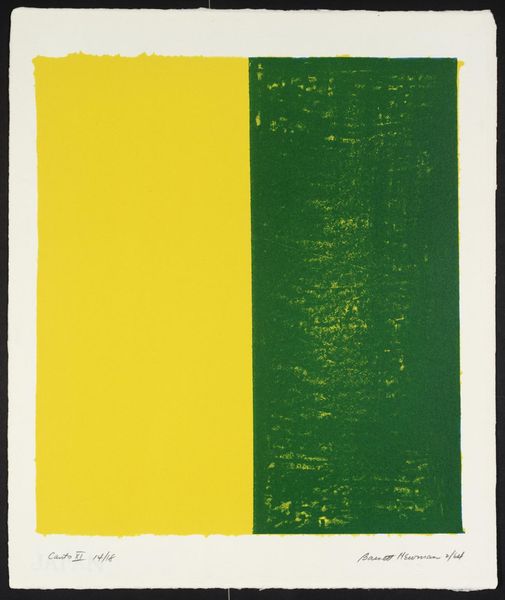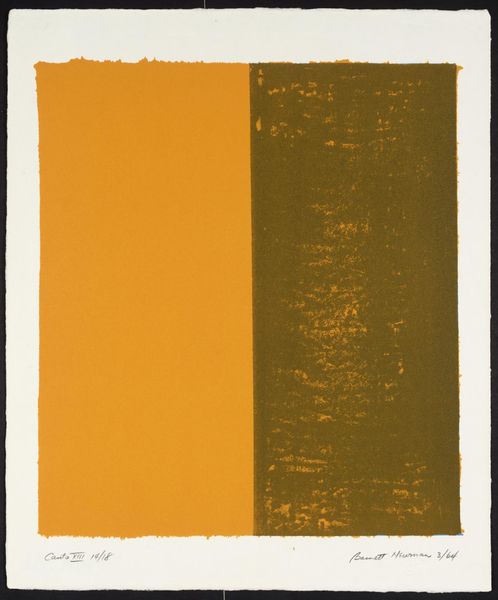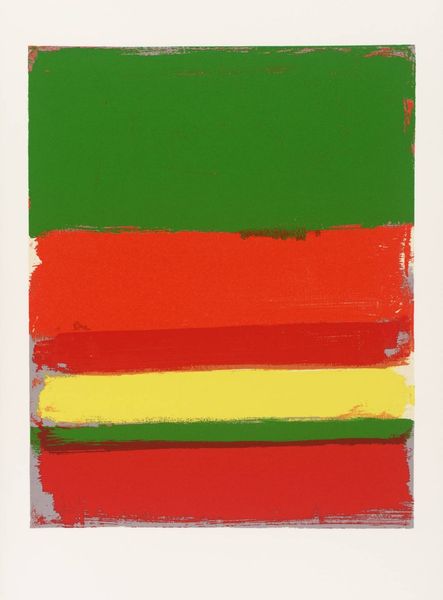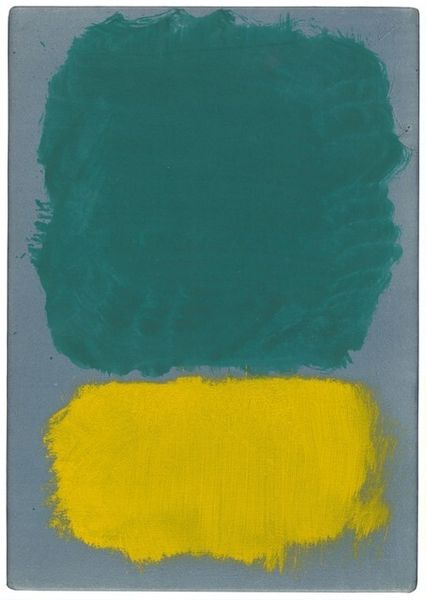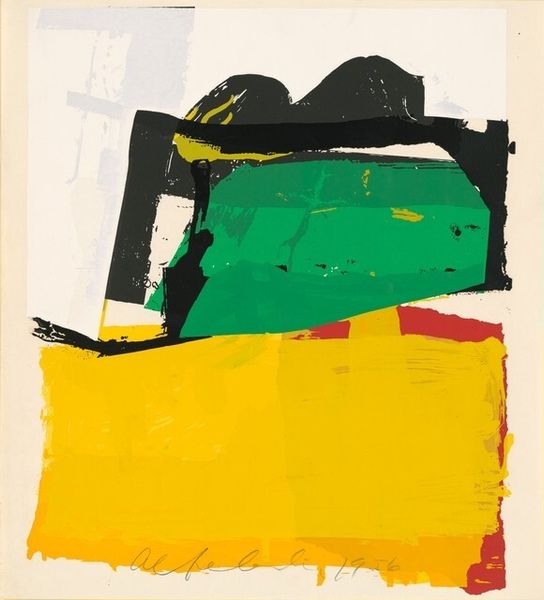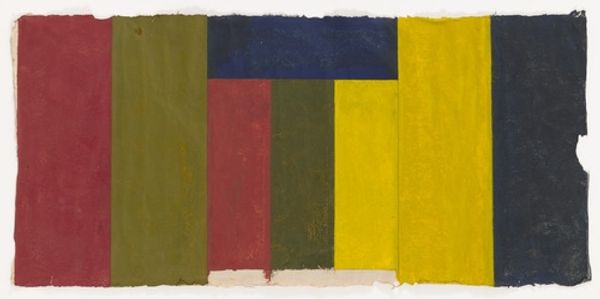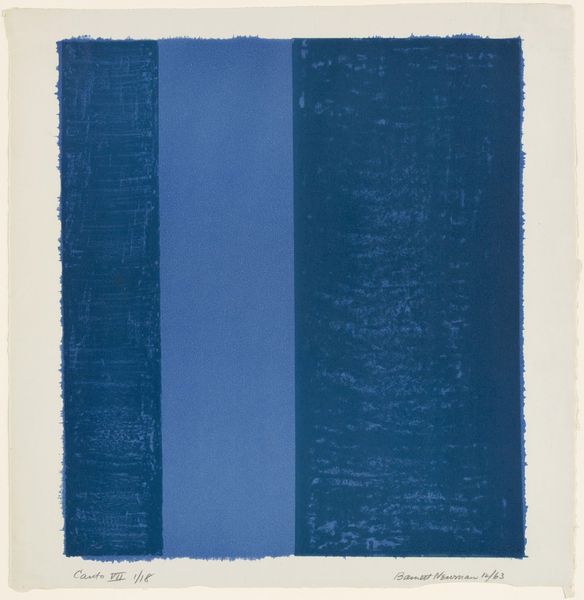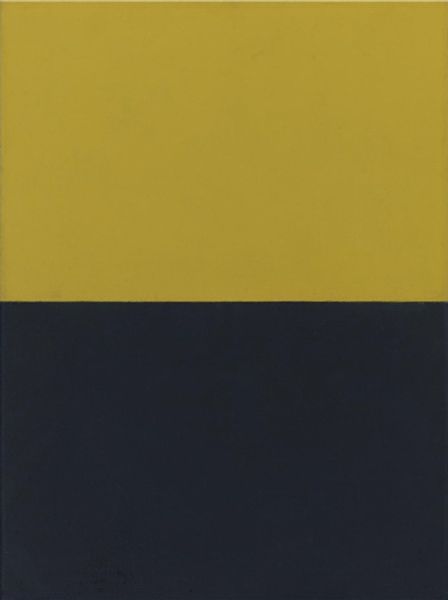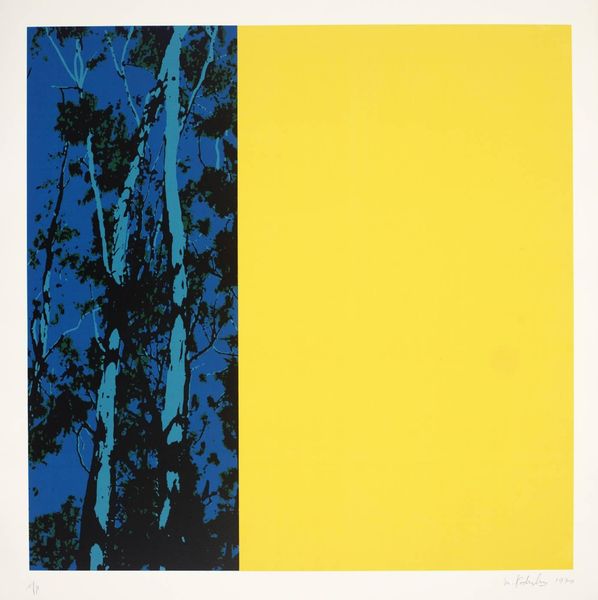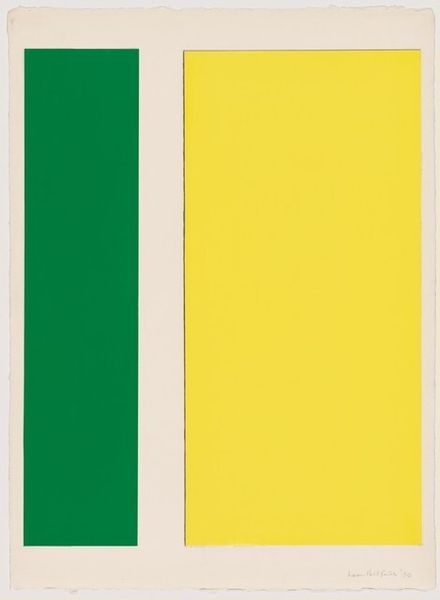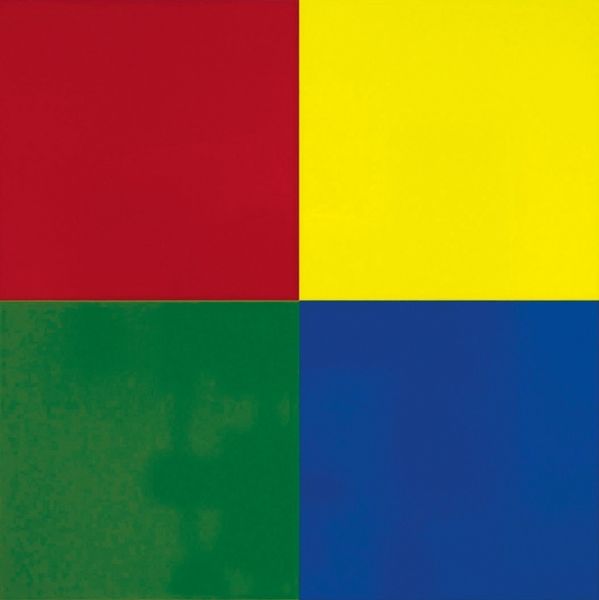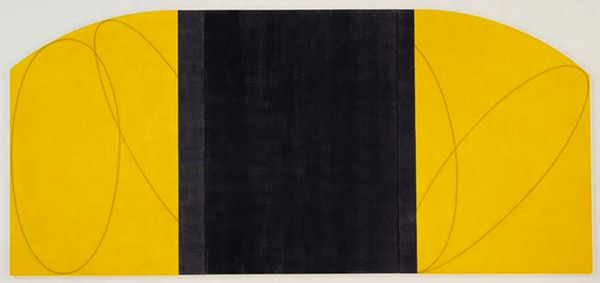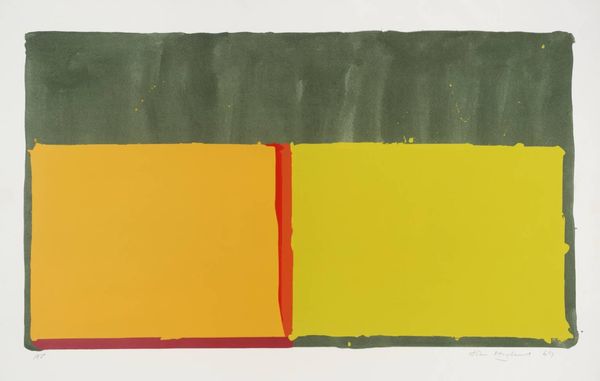
#
abstract-expressionism
#
negative space
# print
#
form
#
geometric-abstraction
#
abstraction
#
line
#
monochrome
Copyright: Barnett Newman,Fair Use
Editor: So here we have Barnett Newman's "Canto XI," a print from 1964. The juxtaposition of the yellow and green is quite striking. The yellow feels smooth and manufactured, while the green shows its texture in a way that almost seems accidental. How do you see the interplay between these two seemingly simple colors and forms? Curator: I find myself considering the labor embedded within that “accidental” green. Newman, like many Abstract Expressionists, was deeply concerned with the act of making, with elevating the physical processes to the forefront. The varying pressure, the inconsistencies of the ink on the plate - these aren’t errors, but evidence of human touch intervening in industrial production. Consider what he's doing here: a 'zip', but printing presses tend to mechanize that stroke, challenge that gesture. What does that mean, historically? Editor: That’s fascinating. It makes me think about mass production versus the singular art object. By highlighting the texture in the green, is Newman pushing back against the anonymity of mass production? Curator: Exactly. And it raises questions about value. Traditionally, printmaking was often seen as ‘lesser’ than painting, a means of reproduction rather than original creation. Newman is deliberately engaging with that hierarchy, isn't he? He makes us focus on the materiality, the ink, the paper, the labor – elements often overlooked when considering only the image itself. The "zip" here is about deconstructing its material value. It’s more than just about surface and color; it’s about the systems and hierarchies that define what we consider art. Where does 'originality' start here? Editor: I hadn't considered that aspect. The materiality is a form of resistance, almost. It definitely changes how I see the work. Thank you for shedding some light on that. Curator: My pleasure. Paying attention to how things are made allows us to question why.
Comments
No comments
Be the first to comment and join the conversation on the ultimate creative platform.
